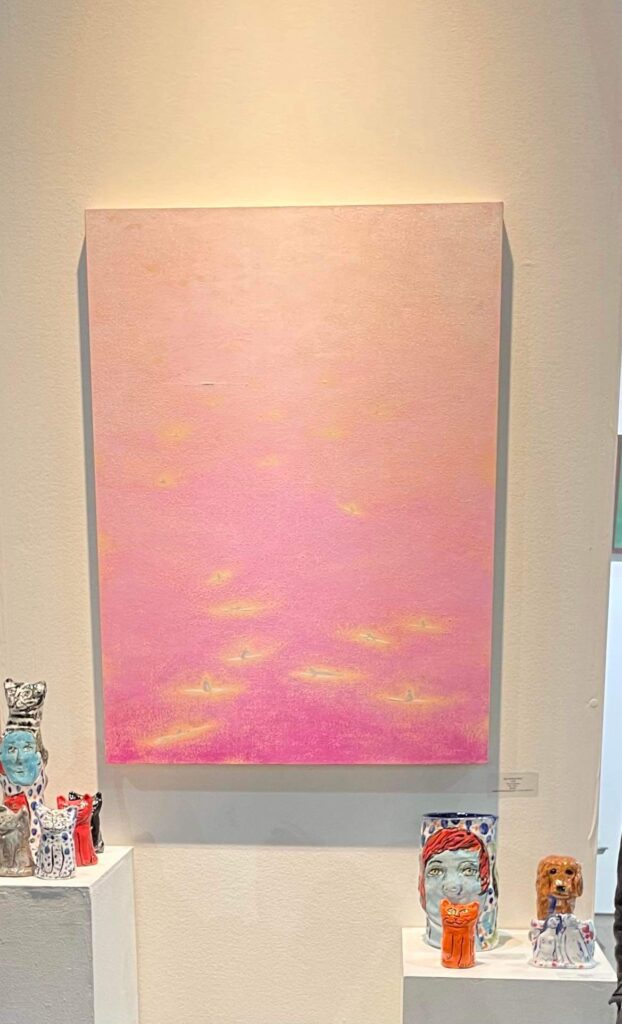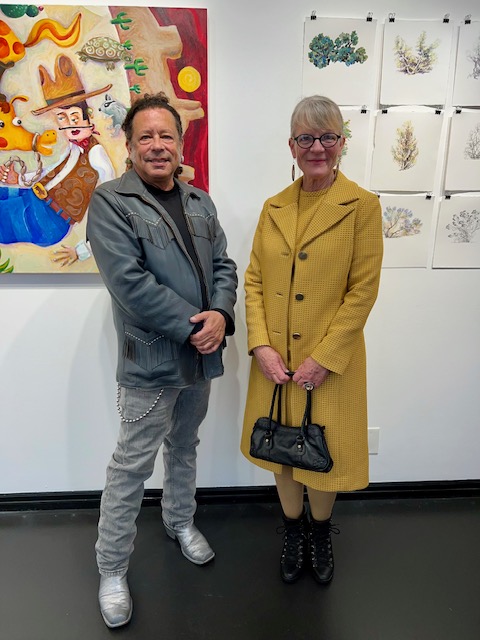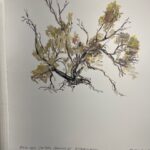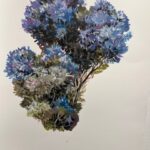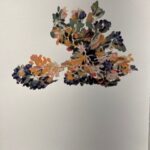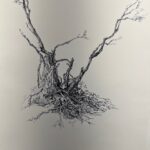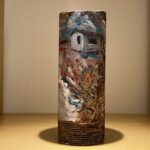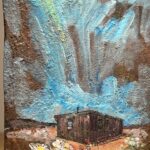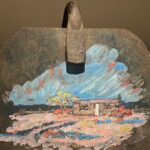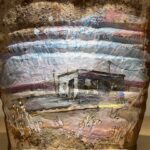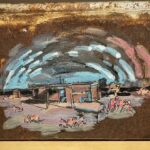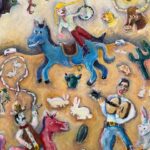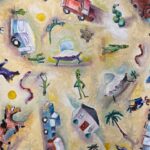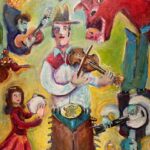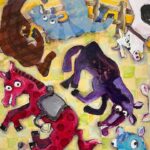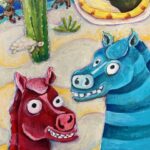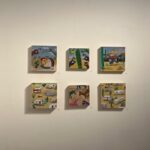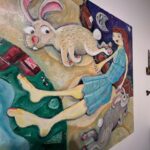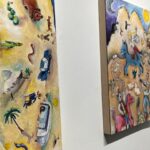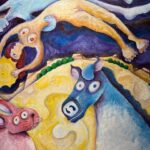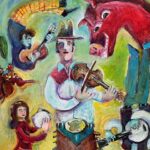The human body is a subject as old as time, and yet the subject never grows old. Perhaps it’s fascination with our being, our physical capabilities, or perhaps it’s a sense of carrying the soul within bone and flesh. Regardless, the body draws us to depict it, to express its fascinating movement, grace, and expression.
David Stewart Klein is equally compelled and has created a stunning body of work to provide it, in his vast, current exhibition, The Form, now at TAG Gallery. For Klein, the body offers a way of expressing everything from beauty to trauma, from the sensual to aggression. Working in multiple mediums from oil on canvas to watercolor, digital painting to colored pencil and ink on paper, the textures and palettes are wide ranging and fascinating. While he calls oil a favorite painting medium, with colored pencil and charcoal his favorite dry mediums, he asserts that he enjoys experimenting with and discovering new techniques such as the “ephemeral and sensitive” nature of watercolor and gouache.
Along with the varied nature of the mediums he uses, he also employs a variety of styles. Klein notes that he incorporates elements of expressionism and the impressionistic as well as “elements of realism, comic book form, and compositions for drama, while maintaining respect for my passion, for the fine art/singular image/object genre.”
In short, the spectrum of his work is dazzling in its diversity. His images range from the traditionally lovely to those with surreal elements or angles. Always expressive in curve and line, his alternately intimately detailed and more abstract forms are each filled with movement and emotion. While many images are voluptuous and offer heightened sensuality, none are lascivious. With over 65 images represented, the artist’s images are as diverse as that of the human body itself.
Klein’s 6th solo exhibition, it represents both a singular achievement and a unique, primarily new direction for the artist. He describes the work as a “four-plus-year journey” that also contains five pieces created prior to 2020. Of the exhibition as a whole, he says, “I really felt the need to create a body of work that addressed both a desire to technically transcend my current state as a lifelong artist and create paintings that let the body hold the energy of my actual experience as a person and the experiences of others.”
The works are richly kinetic and vibrate with that sense of aliveness. Klein says this energy and motion come in part from his long-time work as a composer and musician. Additionally, he relates that “I find movement to be key to my work visually. I love dance, film, animation, and graphic novels, which are mediums that all incorporate movement as a nonnegotiable for the art forms to exist.”
While the works on display are part of a series, each image is, as Klein puts it, “singular…There are threads connecting all of my works together and yet I focus on creating one bold, meaningful, beautiful work of art at a time.”
Over ninety percent of the images in this show used live models, but they serve as a jumping off place for the artist who says he takes “great liberty to express myself more dynamically once the composition, forms and lighting are identified.”
While there are too many images to describe each, among the many standouts is the delicate profile of “Bent Over,” created in watercolor on paper, and in complete contrast, “Apocalypse at the Picnic,” an oil on canvas work whose sinewy, seated images exude both longing and foreboding.
There is the dark, noir like figure in his “Body Emerging,” a work of digital printing on canvas; the slightly surreal and abstracted image with pendulous breasts revealed in “Body;” and the vivid red of “Excited Torso,” a vibrantly printed canvas of a drawing.
Blazingly expressive is the abstract oil-on-canvas “Firestarter;” the muted realism of “Desolate,” a mix of watercolor and colored pencil on paper, is achingly lonely. Some images recall a nymph or goddess, as in “Freedom to Be,” while others depict partial aspects of the body as the focus, such as the mid-face to just-below-the-hip male figure, all puffed chest and muscular arm, depicted in “Firm Stance (Self-Portrait).” Klein’s ink on paper “Madam Recline” offers echoes of art deco in design; while another partial figure, “MY BODY, presents an image stretching from chin to thigh, vibrates with pride despite, or in celebration of, imperfections.
Multiple limbs are rigorous in their musculature in the oil painted figure of “Seeking Salvation,” while the graphite on paper “Ready to Pounce” is pure motion.
Klein’s large-scale oil work “The Alchemist,” positions a beautiful female figure against a colorful and textured background, along with two charming grey cats. In contrast, other works such as “The Claw,” created in colored pencil and watercolor, place the subject against a featureless background. It is invigorating to see such an extensive and expansive exhibition with a single deeply realized subject.
Acutely visible in Klein’s work is the fact that the images are not made to simply reveal “what my eyes can see,” as he puts it. Rather, they are based on his perceptions of what each of his subjects “present on multiple levels.” It is an approach Klein is known for, rooted in his intense purpose to create and communicate “a story of the human spirit and form.”
The exhibition runs through March 2nd, with a closing event from 5 to 7 p.m.; Klein will be conducting an artist’s talk on February 25th, from 3 – 5 pm.; and this week, on the 22nd, he’ll be holding a life drawing class with a live model to provide other artists and aspiring artists with the opportunity to draw or paint the human form amid his own curated works. The life drawing class will run from 7:30 to 9:30 p.m. this Thursday.
TAG is located at 5458 Wilshire in mid-city. Regular gallery hours are Wednesday-Sunday from 1 to 7 p.m.
- Genie Davis, photos by Genie Davis



































